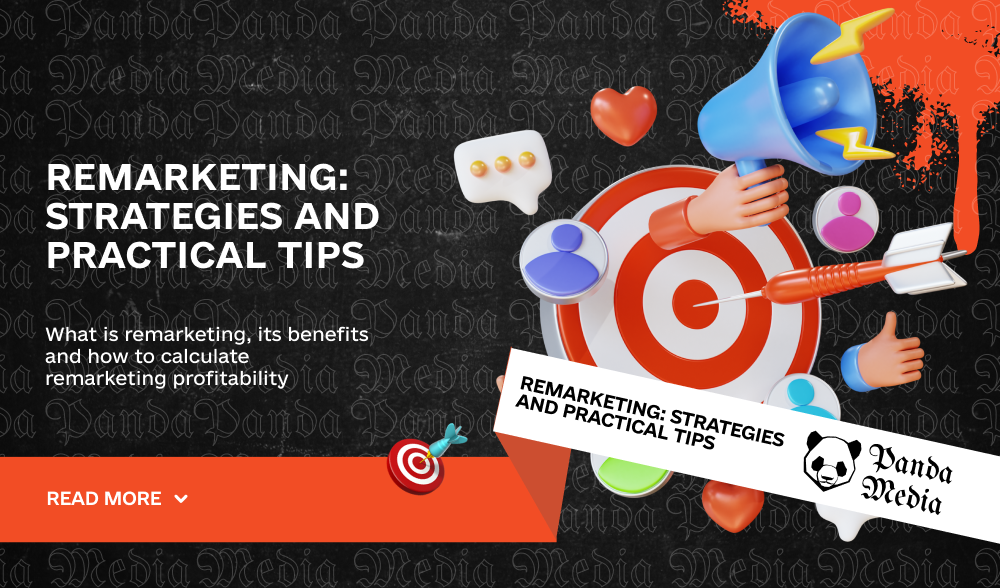Don't miss interesting news

If you have already had experience with contextual advertising, you know about its fast results. Your chances of success will increase if you target a “warm” audience – these are visitors to your site who have shown interest but have not made a purchase. This tactic to attract such users is called remarketing, and it’s what we’ll discuss in this article.

While SEO experts may use the terms remarketing and retargeting interchangeably, in practice they have the same meaning. The only difference is the name, which depends on the contextual advertising platform: some call it remarketing, others call it retargeting.
However, if we take a closer look at the theory, there is a difference between remarketing and retargeting. Remarketing is a broader concept that includes strategies to attract back all potential customers who have shown interest in your website.

Remarketing is an ideal option for those who want to use their advertising budget more effectively. This is especially important for small and medium-sized businesses and industries with intense competition, where contextual advertising prices can be very high. In such circumstances, it is critical to filter out clicks from individuals who are unlikely to make a purchase.
It is generally accepted that remarketing is effective with daily website traffic of 300 people or more. However, for a business with a high cost of goods and a long process of making purchasing decisions, 100 visitors per day may be enough.
Remarketing is not suitable only for those areas of activity where advertising platforms restrict or prohibit the placement of advertising, such as products of the tobacco industry, hookahs, and ritual services.

Remarketing allows you to reach out again to users who have previously visited a company’s website. Interestingly, you do not need to visit the site again to be seen again – ads can appear on any sites that participate in the Google Adsense network. To activate remarketing, the company inserts a special code on its website. When a user visits the site, a cookie is stored in their browser that tracks the site visit, allowing advertisers to subsequently display targeted ads.
There is also the option of dynamic remarketing, which is ideal for e-commerce. In this case, ads are only shown to users who have viewed specific pages or products on the site, added products to a shopping cart, or made a purchase. Dynamic remarketing allows you to target ads to the most interested audience, significantly increasing the effectiveness of advertising.
An example of dynamic remarketing: if a user is interested in a certain product but does not buy it because of the high price, he may later see an advertisement for the same product, but at a discount, which may incentivize a purchase.

Remarketing strategies can include different campaigns, each targeting a specific user action, such as not paying for items in a shopping cart, buying everyday items, or browsing for long periods without making a purchase.
Campaign for abandoned carts: If a user has added items to their cart but has not completed the purchase, the goal of remarketing is to remind them through contextual ads or an email.
Campaign for abandoned baskets: If a user has added items to their shopping cart but has not completed the purchase, the goal of remarketing is to remind them through contextual ads or an email.
Remarketing for everyday items: This is ideal for items that are purchased regularly, such as personal care products, baby food, or service subscriptions. If a customer has purchased an item that runs out after a certain amount of time, you can send a reminder to buy a new batch of the item.
Related sales: When a customer buys a certain product, you can offer them additional products that complement their choice. For example, after buying a new smartphone, the user can be offered to buy a case or protective glass.
Engagement by interest: This approach involves showing ads according to a certain behavior of the user on the site. If a visitor has spent a lot of time on a particular page, he can be shown an ad with a discount on that product. Or, if the user has browsed several product categories, he can be offered a special price or information about a sale.
Determining the profitability of remarketing is similar to evaluating the effectiveness of any other contextual advertising:
ROI = (profit – costs)/costs*100%
If the resulting figure exceeds 50%, it indicates the success of the campaign. However, it should be taken into account that such an indicator will not be accurate because it is impossible to fully take into account all users who were attracted by remarketing. For example, the user may have viewed the ad several times, but did not make a targeted action, and then remembered about the site and went to it by entering the name in the search engine. The advertising system will not record this visit as a result of remarketing, but the client has been attracted thanks to the advertisement.
The task of such advertising campaigns is to attract users who have already been on the resource, viewed articles, put the goods in the cart, and responded to posts on social networks. For example, after visiting the site of an online store with scooters, remarketing in Google will start working – the user will be shown ads reminding them about the viewed products.
Setting up Google remarketing is necessary when there is a situation when the coverage indicators remain stable, but the conversion rate of the site has fallen. Such campaigns will remind about the viewed goods, and stimulate sales.
The possibilities of repeatedly showing ads to interested users are very wide. Now you can set up Google remarketing and show ads on Google partner sites, in the contextual media network, and on YouTube. This is more than 2 million resources around the world.
To launch such advertising campaigns, you need to first create audiences of users who visited the resource. In this case, setting up remarketing in Google Analytics will help. With this service, you can get more flexible data based on the actions of site visitors. Location, demographics, and other parameters are also taken into account.